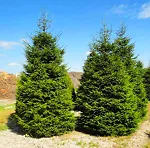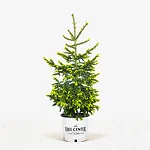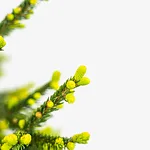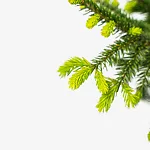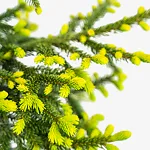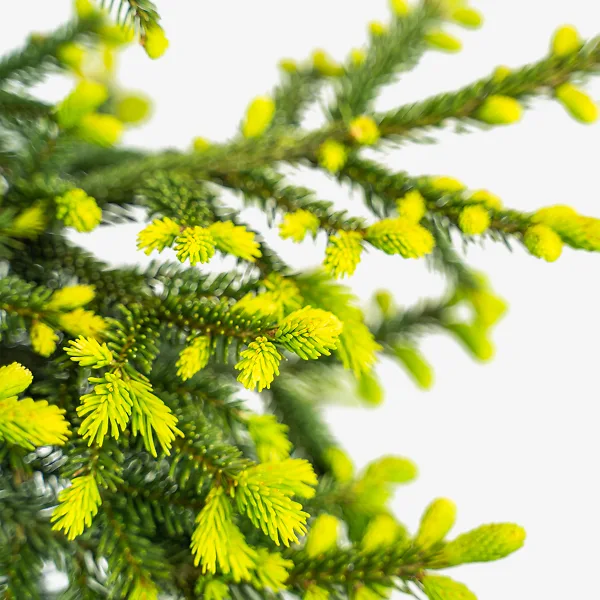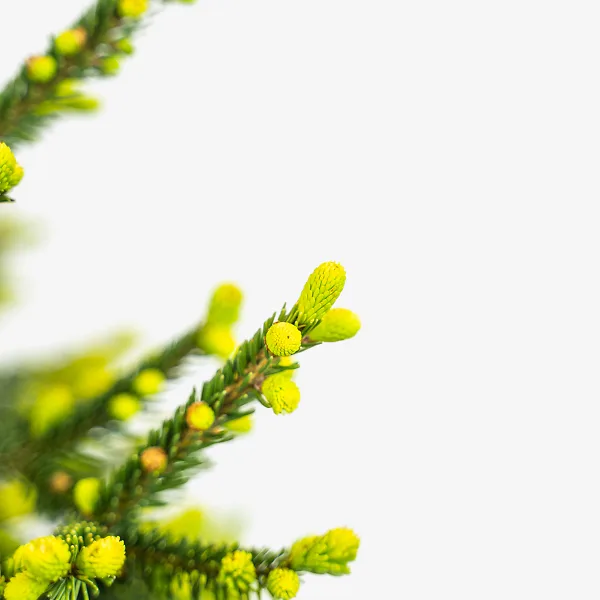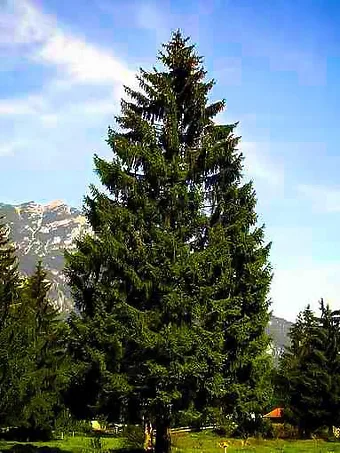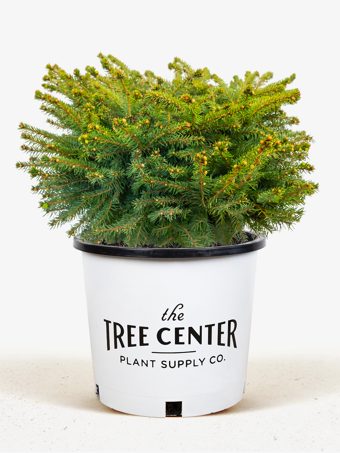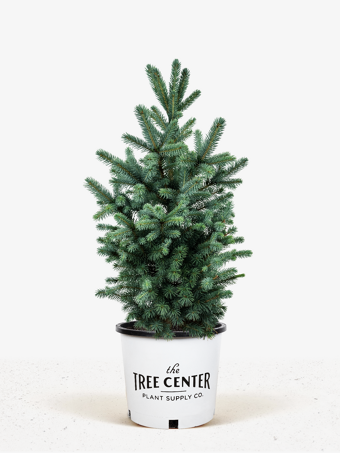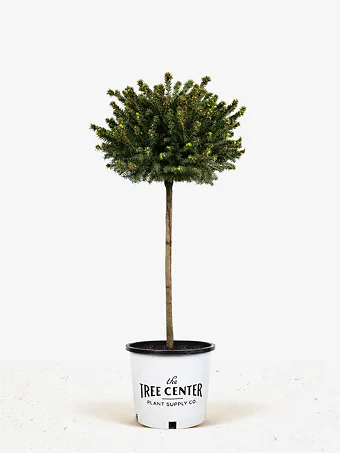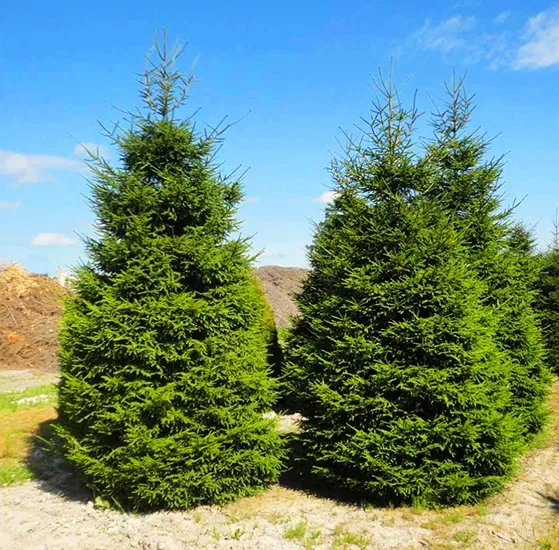
Green Knight Oriental Spruce
Picea orientalis 'Green Knight'View more from Spruce Trees
Green Knight Oriental Spruce
Picea orientalis 'Green Knight'
30 day - ARRIVE AND THRIVE™ guaranteeLearn more


Special Features

Botanical Name
Picea orientalis 'Green Knight'
Outdoor Growing zone
4-8
Mature Height
10-25
Mature Width
4-12
Sun needs
Full Sun
DOES NOT SHIP TO
AK, CA, HI, PR
The Green Knight Oriental Spruce is a wonderful alternative to the boring and dull Norway spruce. It has bright-green, glossy needles and an elegant, graceful pyramidal form, becoming a bold specimen with layers of almost horizontal branches. This classic form is retained for many years, and mature trees still have a dense, pyramidal form with low limbs. Growing to about 12 feet tall, and ultimately double that or more, allow enough room for it when planting. Use it as a lawn specimen, screening, or as a row to mark a property line.
- Elegant, pyramidal upright evergreen tree
- Glossy green needles create a bright look
- Far superior to Norway spruce
- Beautiful lawn specimen or screen
- Easy to grow and vigorous
Full sun is best for the Green Knight Oriental Spruce, allowing it to retain the low branches for decades. Plant it in any well-drained soil, and water young trees regularly. Older trees have good drought resistance to ordinary summer dryness. Pests or diseases are very uncommon, and this is an easy, trouble-free tree to grow. Watch that it keep just one single leading shoot, to prevent future splitting, and don’t plant beneath overhead wires.
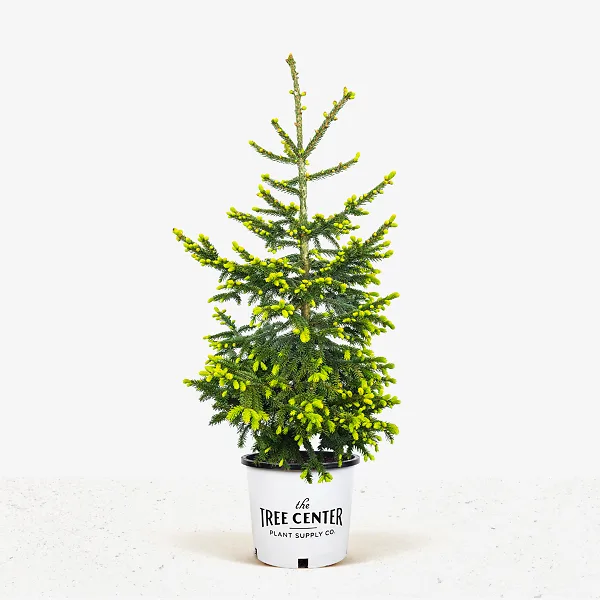
Some tree shapes are classic, and when it comes to evergreens, everyone admires the classic pyramidal shape, with horizontal layers of branches, that we see in spruce trees. If you want a green spruce it can be tempting to just stick in something ordinary, like the Norway spruce seen everywhere. But in gardening it always pays to plant the best – after all, our trees are with us for a long time, so why stick to the dull and ordinary? When it comes to that classic green pyramid form, it is captured best of all in the striking and elegant Green Knight Oriental Spruce. Superior in every way to Norway spruce, this tree, also known as Caucasian spruce, is admired by all conifer experts, and this special variety called ‘Wells Green Knight’ was selected by one of the country’s top conifer growers – so you know it’s head and shoulders above the rest. Forming a perfect pyramid of layered branches, the rich green coloring is always appealing. For many years it will be a modest size ideal for the best yard Christmas tree in your neighborhood, or for screening and background planting. If a green spruce tree is what you are looking for, then this is the one you want. Trust the experts and plant the very best – and the most beautiful – there is.
Growing the Green Knight Oriental Spruce
Size and Appearance
The Green Knight Oriental Spruce is an upright evergreen coniferous tree, with a strong central trunk and radiating layers of branches. It grows at a moderate rate, reaching perhaps 12 feet in 10 years, with a 6 foot spread. The ultimate size is not clear, but it will continue growing, with older trees spreading wider, and reach 25 feet, with a 12 foot spread, in 20 or 30 years. Mature trees will become even larger. The strong central stem grows straight up, with circles of branching radiating out, with some clear trunk between them, giving a very bold layered look. Branches radiate out at about 35 degrees, keeping that neat, layered look for many years. Branches are retained close to the ground for a very long time, unless you remove them for clearance. The bark is pink-gray when young, becoming darker and splitting into small rounded plates on the trunk. The needles are a pronounced dark but bright, glossy green, and they are short, hardly more than ¼ inch long, but densely packed along the shoots, and growing more or less all the way around them. Older trees will develop seed cones, which are about 4 inches long, and hang in clusters along the branches. These are purple in summer, turning light-brown in fall. The bright-red pollen cones in spring are small but beautiful close up.
Using the Green Knight Oriental Spruce in Your Garden
This tree has enormous grace and charm, something sadly lacking in the dull and boring Norway spruce. It is a very superior alternative, and just as easy to grow. Plant it on a lawn as a specimen, alone, or in a cluster of 3 trees – a striking feature if you have the room. Grow it in a row as a boundary marker or screen, or scatter it along the sunny side of a woodland. Always allow enough room for its ultimate growth when planting. Look up and check for overhead wires. Don’t plant closer than 10 feet to a building or wall, or within 5 feet of a property line or fence. Consider the scale of the tree in your space, and be sure you have enough room. For clusters and rows, space trees 6 to 10 feet apart.
Hardiness
The Green Knight Oriental Spruce is completely hardy from zone 5 into zone 8. It is also hardy in sheltered spots in warmer parts of zone 4.
Sun Exposure and Soil Conditions
Full sun is best for the Green Knight Oriental Spruce, and that, combined with sufficient room, will keep the branches growing to the ground for decades. Shade will cause weak growth and the lower branches to die progressively. It grows easily in almost any well-drained soil, benefiting from regular deep watering during its early years, but taking moderate amounts of drought once well-established.
Maintenance and Pruning
You won’t have any significant problems with growing this tree – it’s trouble free and usually free of pests or diseases. It is best to plant it where you don’t need to trim the lower branches for clearance, as this keeps the sweeping, elegant form for as long as possible. If you do need to create a clear trunk, do this progressively while the tree is still young, to keep a clean trunk, rather than leaving it until the tree is older, which will create long-lived scars. If you see any development of two leading stems, cut back the more ‘outside’ one by at least half, to avoid a double trunk, which can lead to splitting and storm damage.
History and Origin of the Green Knight Oriental Spruce
The Oriental spruce, or Caucasian spruce, Picea orientalis, grows naturally in a limited area around the eastern edge of the Black Sea, in Georgia, Armenia and Turkey. It usually grows as single-species forests on mountain slopes. Wild trees have been recorded at 125 feet tall. These areas were once called ‘the Orient’, which accounts for its name, but today there is a move to make Caucasian spruce the preferred common name. The variety called Green Knight was discovered at Wells Nurseries, a specialist conifer grower in Mount Vernon, Washington state, as a single, unique tree among a batch of seedling trees growing in their nursery
Buying the Green Knight Oriental Spruce at the Tree Center
It is always best to grow something in your garden a little out of the ordinary. That doesn’t have to mean ‘hard to grow’, not at all. The Green Knight Oriental Spruce is just as easy to grow as common Norway spruce, but so, so much better. This beautiful tree is not widely grown by nurseries, so our stock is limited, and this could be a one-off availability. Don’t hesitate, order now and grow the best there is.
